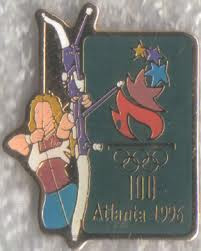Sydney Summer Games were held in Sydney , the capital city of the state of New South Wales in Australia from 15th September to 1st October in the year 2000 were officially known as the Games of the XXVII Olympiad. The stadium is located in the Sydney Olympic Park near Homebush in Sydney. Stadium Australia was the largest Olympic Stadium. Now the stadium is called Telstra Stadium.The Games were officially opened by Governor General William Deane . In the stadium, the Olympic Flame was lit by Cathy Freeman.
In Sudny Summer Games 10,651 competitors from 199 countries took part. There were 300 events in 28 sports in Sydney 2000 Summer Games and archery was also included. United States won 97 medals with 40 gold, 24 silver and 33 bronze medals in the Sydney 2000 Summer Games.
One hundred twenty eight archers from forty six nations competed in 2000 Sudny Summer Games. One change from the 1996 Olympics was that the team competition was held on two days rather than the one-day format used in Atlanta. This new format for the team competition allowed for the men and women to have their own full day of matches.This change enhanced the enjoyment of the spectators and the worldwide television audience.
 |
| Women Korean Team in Traing |
The archers competed in the four gold medal events individual and team events for men and for women that were contested at these games. The Korean team won three out of the four gold medals contested. Eight Olympic records and three world records were broken at these games.
 |
| Sydney 2000 Olympic Medal |
Sport Ticket Exchange is the online ticket exchange platform where you can buy or sell Sport Tickets especially Olympic Tickets. Olympic fans that have spare tickets and want to earn profit can Sell Olympic Tickets at Sport Ticket Exchange.








































